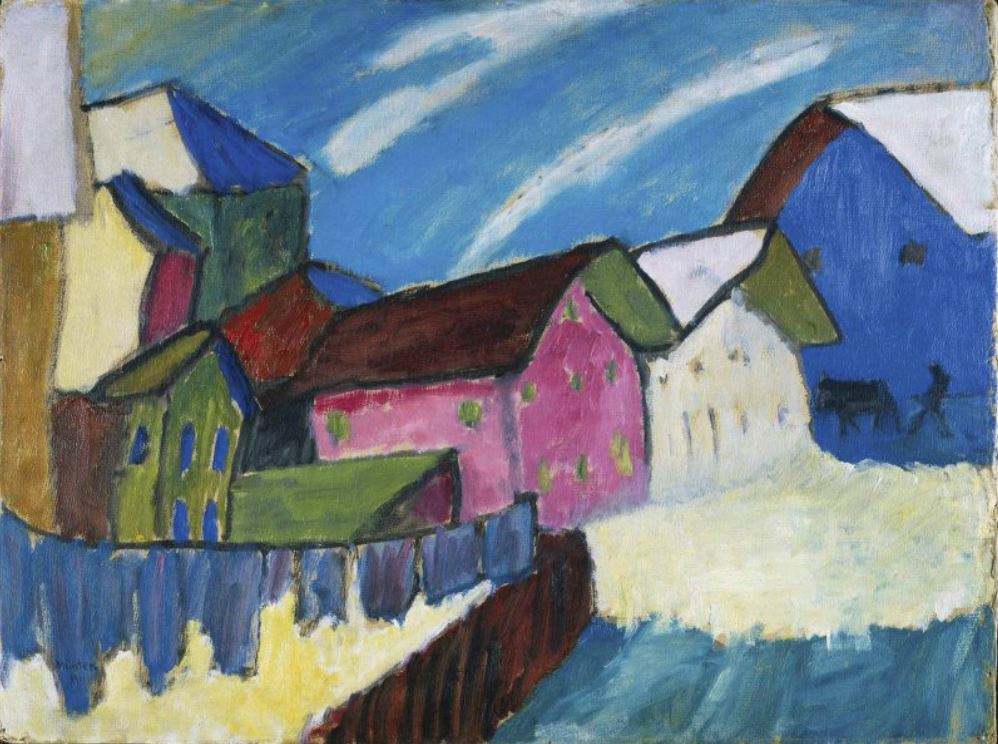Exhibitions
Gabriele Münter's own voice
The lyricism and spirituality of an essential figure, at the Thyssen-Bornemisza Museum.

The life and work of Gabriele Münter (1877–1962) are a testament to resistance, exploration and creative rebellion. In an art world dominated by men, the German artist knew how to open a path for herself, standing out as one of the founders of the expressionist movement Der Blaue Reiter. However, his name has too often been overshadowed by those of his male contemporaries, such as Kandinsky or Franz Marc . For this reason, and with the aim of rectifying this omission, the Thyssen-Bornemisza National Museum hosts this retrospective dedicated to Münter until February.
With more than 150 works including paintings, photographs, drawings and documents, the exhibition shows the richness of a career that spanned more than six decades and that never stopped transforming. This is the first retrospective in Spain dedicated to this artist, after the Zentrum Paul Klee in Bern organized the first complete exhibition on her in 2022.
Münter was an innovative artist who challenged the conventions of her time. His initial interest in photography, a medium not yet established, allowed him to explore reality with a direct and sincere look. He received his first camera, a Kodak, during a trip to the United States, and began to experiment. These first images, often spontaneous, decisively influenced his later pictorial language, characterized by precise framing and simplified forms. His compositions already pointed to a search for essence, a common thread throughout his work.

His training in Düsseldorf and later at the Phalanx school in Munich, where he met Wassily Kandinsky, marked a turning point. The trips they made together in Europe and North Africa enriched their work with influences from Van Gogh, Gauguin and Matisse. But it was in Murnau, a small Alpine town, that Münter found his true artistic voice. Immersed in a utopia of rural life, she developed some of her most emblematic works, exploring the spiritual connection between art and nature. His Murnau paintings, with intense colors and clear lines, convey a lyrical yet powerful simplicity.
Her participation in Der Blaue Reiter was central to the development of the movement, but even in this advanced circle, women artists were often marginalized from theoretical discussions. Nevertheless, he managed to become one of the most outstanding figures of German expressionism at the beginning of the 20th century, thanks to a work that reflected not only on the inner world of the artist, but also on spiritual reality and emotional that their motives conveyed. However, her career cannot be reduced to this stage alone, and her subsequent output shows an artist in constant evolution.

The First World War meant a break in his personal and professional life. During his exile in Stockholm, the influence of Swedish decorativism softened his tones and gave his works a more graphic style. On returning to Germany, without a fixed residence, he focused on drawing, until in 1925 he settled in Berlin. This stage took his work towards a style closer to the New Objectivity, reflecting the turbulent times that Germany was living.
His definitive return to Murnau at the end of the twenties marked a new chapter in his career. Here, he resumed the landscapes that had inspired him in his beginnings, but now his work was characterized by a more mature look, marked by nostalgia and the purity of rural life.
Münter's work, as diverse as his career, is a constant exploration of the essence of things: "I extract the most expressive aspects of reality and represent them with simplicity, going to the grain, without frills."
This retrospective at the Thyssen rediscovers an essential artist and aims to redress a historical grievance. Despite her indisputable contribution to Expressionism, Münter was forgotten for decades, often reduced to the role of Kandinsky's student or partner. This exhibition breaks with this reductive narrative and shows an independent, experimental creator deeply rooted in her own worldview.









